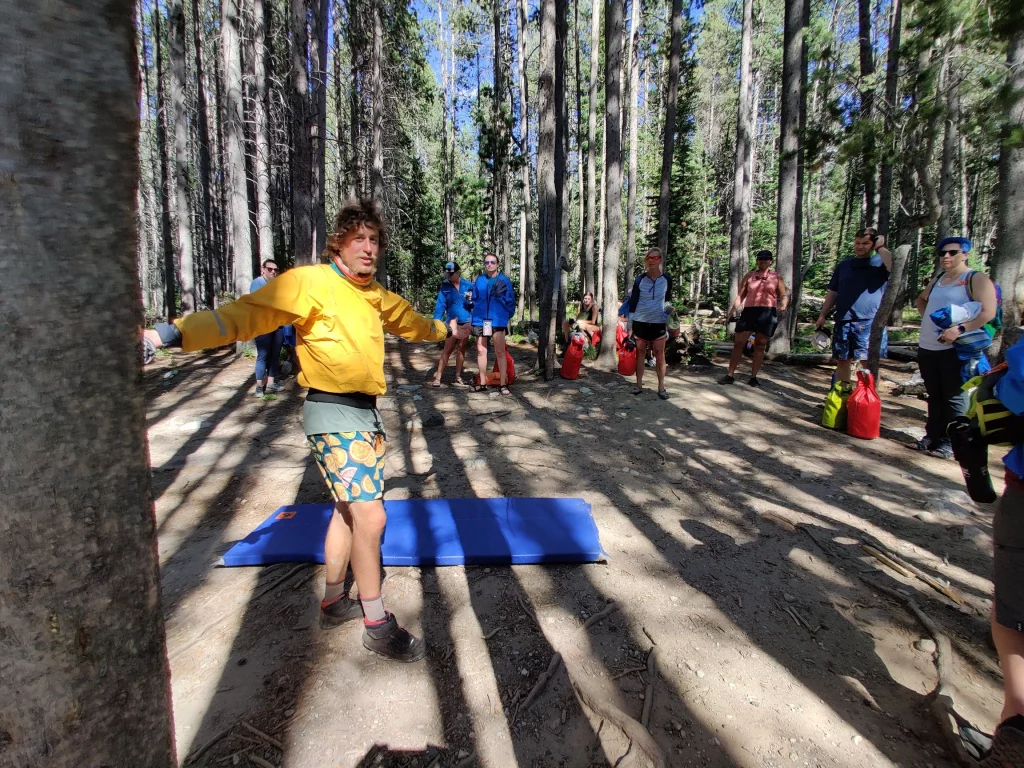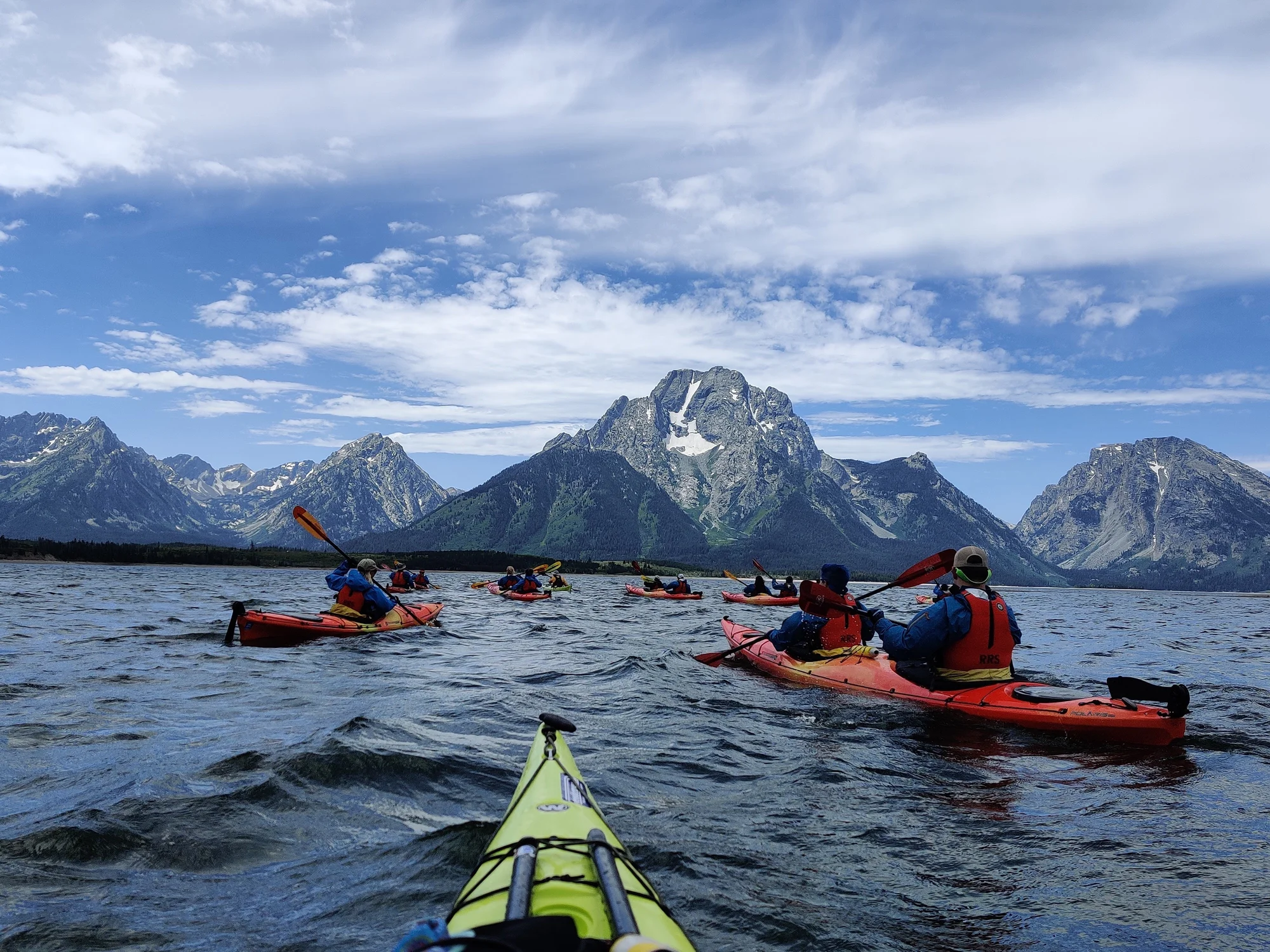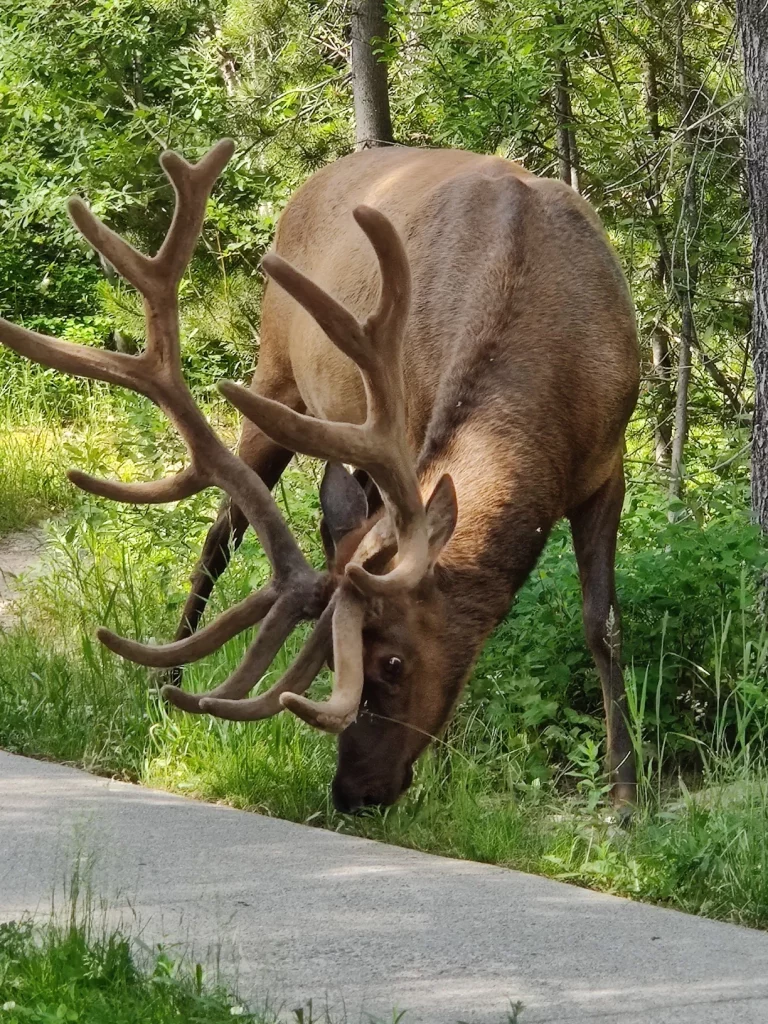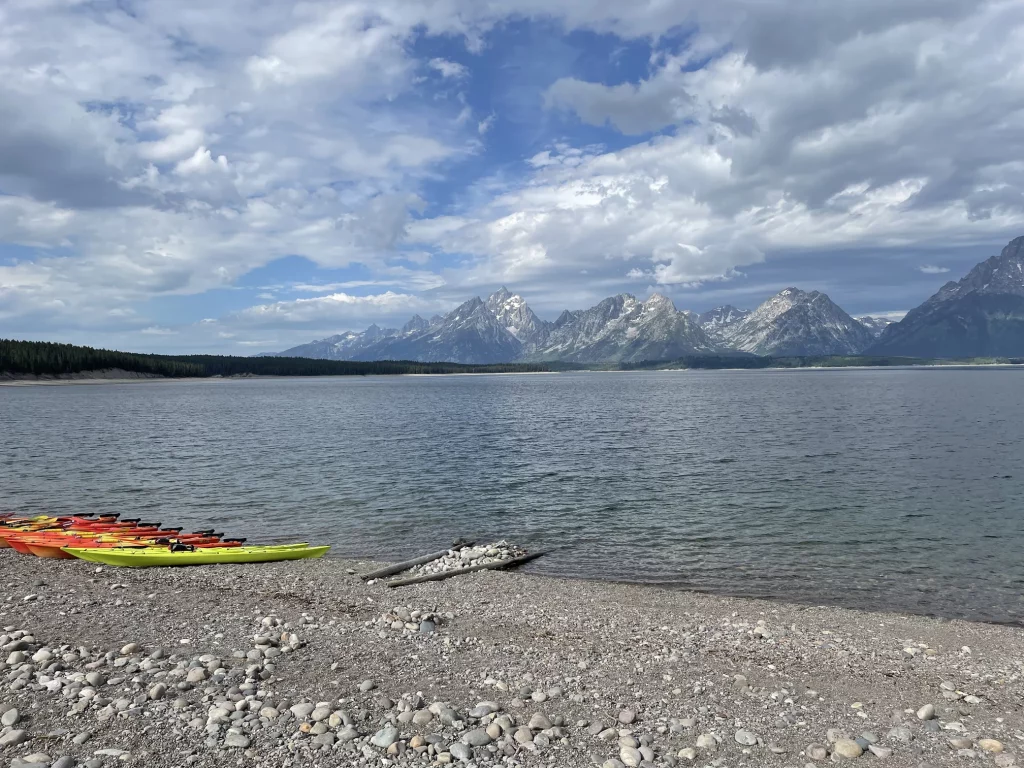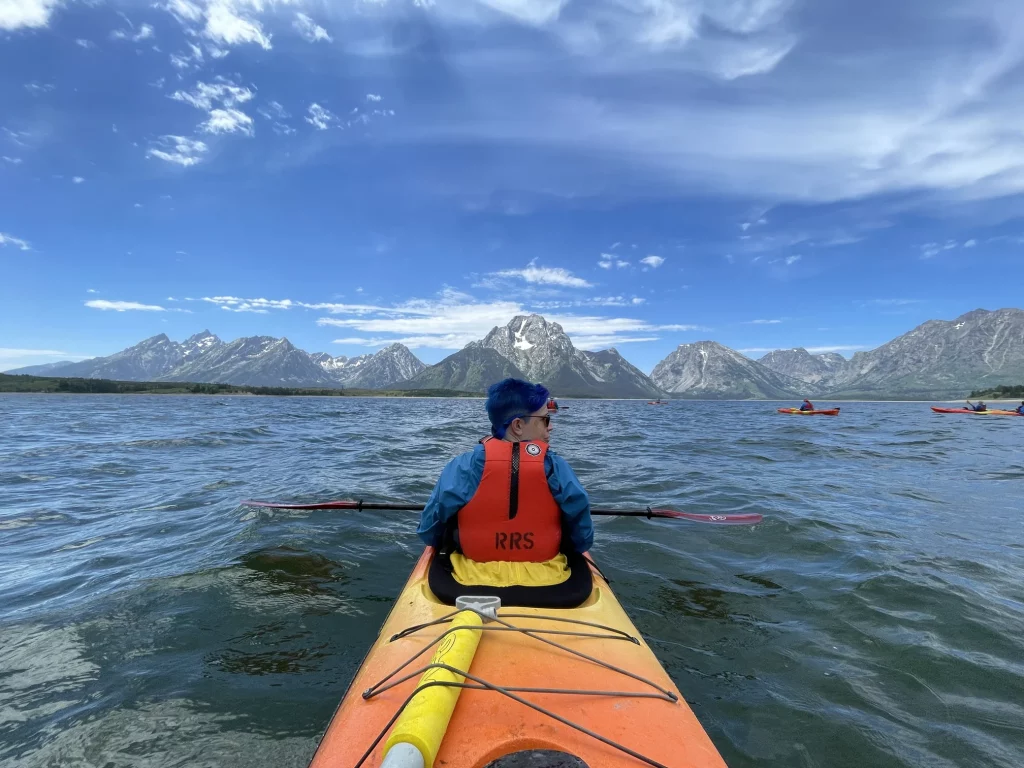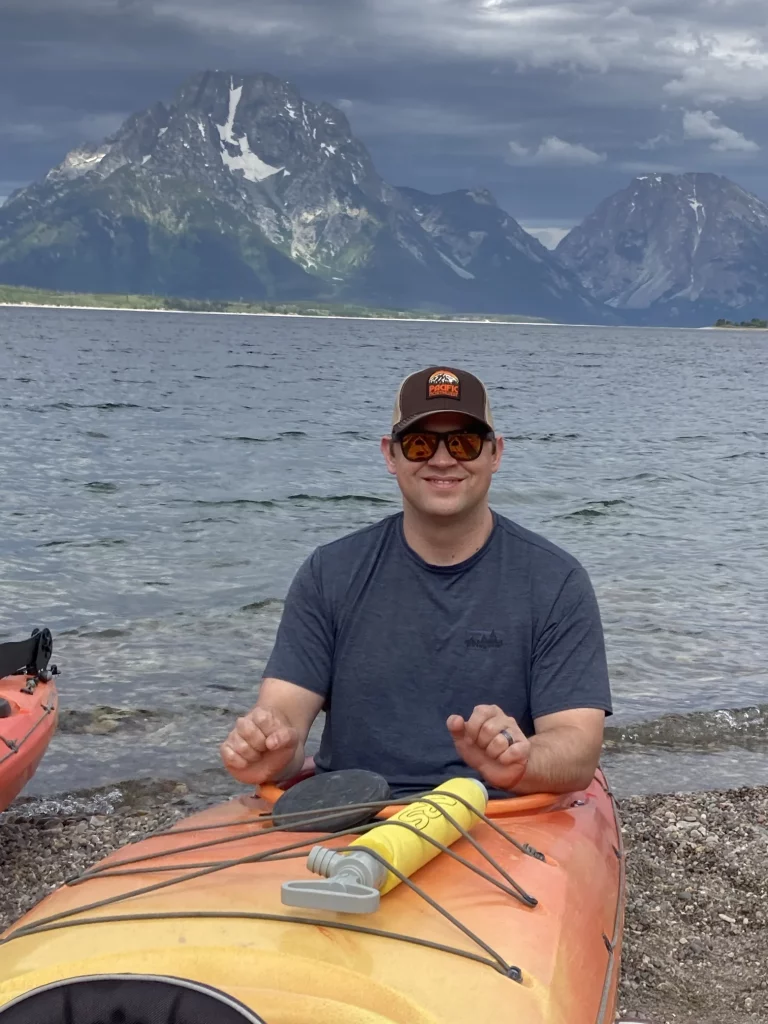Most of our trips are self-researched and the itinerary is our responsibility. Meaning we’ve got an excel sheet, hours of planning, and, aside from the professional tours, the logistical execution has been on us. We typically find that self-planning and independent logistics provides excitement, freedom of adventure, and anticipation prior to the trip but it’s difficult and can be a major stressor. When I started a new job with REI, we decided to give REI Adventures a shot and booked a kayaking trip to the Grand Tetons. Four days of kayaking, camping, and floating down the snake river – yes please, sign me up. Our friend Snesha was interested and reserved a spot as well.
From Seattle, we drove to Jackson and met our guides, John T, Haley, and Hunter the night before our trip to sign additional waivers (who needs liability protection?), pick up gear, and review plans for tomorrow. This was amazingly effective at establishing a plan for the next day and kept everyone informed of the plan for the next day’s activities. Our group was a mix of families, single travelers, friends traveling together, and our Seattle contingent. We were each given a couple of dry bags and a bear canister to take back to our hotel and pack with our own gear. Plans were made to meet in the morning with the promise that if we were early, we would be rewarded with a stop for coffee on the way into the park.
With our plan cemented and gear obtained, we went our separate ways. Devin and I explored the town a bit and found some beer, wine, and tapas before packing up and getting a good night’s rest.
Tuesday morning arrived and we made our way over to the meeting place with our possessions packed into dry bags (huge waterproof things designed to keep our stuff dry) and anything smelly (sunscreen was a surprise to Devin) or food-related in bear canisters. Everyone was under-caffeinated but on time and very excited to get underway. Our guides loaded up the gear and herded us into vehicles and we departed for the park. Our on-time departure was rewarded with an opportunity to grab a cup of coffee when the guides stopped the van at a store along the way to the park.
We ended up at a boat ramp at Jackson Lake. There are other boat ramps at the lake, but the water level has been too low due to low natural flows and the need to fill downstream reservoirs, so this was the only one in current operation. Haley and John T provided a rundown of the personal flotation devices, kayaks, and paddles.

The first leg of the journey took us to an island to stop for lunch. There were two guides in kayaks and one in a support boat with an outboard motor all keeping an eye on the group as we made our way across the lake. The paddle was slightly breezy but the water was calm and made for a nice cruise. An hour of paddling got us to the small island for a lunch break.
While we explored the island our guides set up lunch. I was expecting a basic trail lunch that I’ve had many times while hiking. Something like trail mix, protein bars, and other varied light-weight trail foods. Our guides set up an impressive sandwich making station. There were multiple kinds of bread, vegetables, meats, spreads, and pickles. It doesn’t sound like much but when you are expecting trail food this was a surprise.
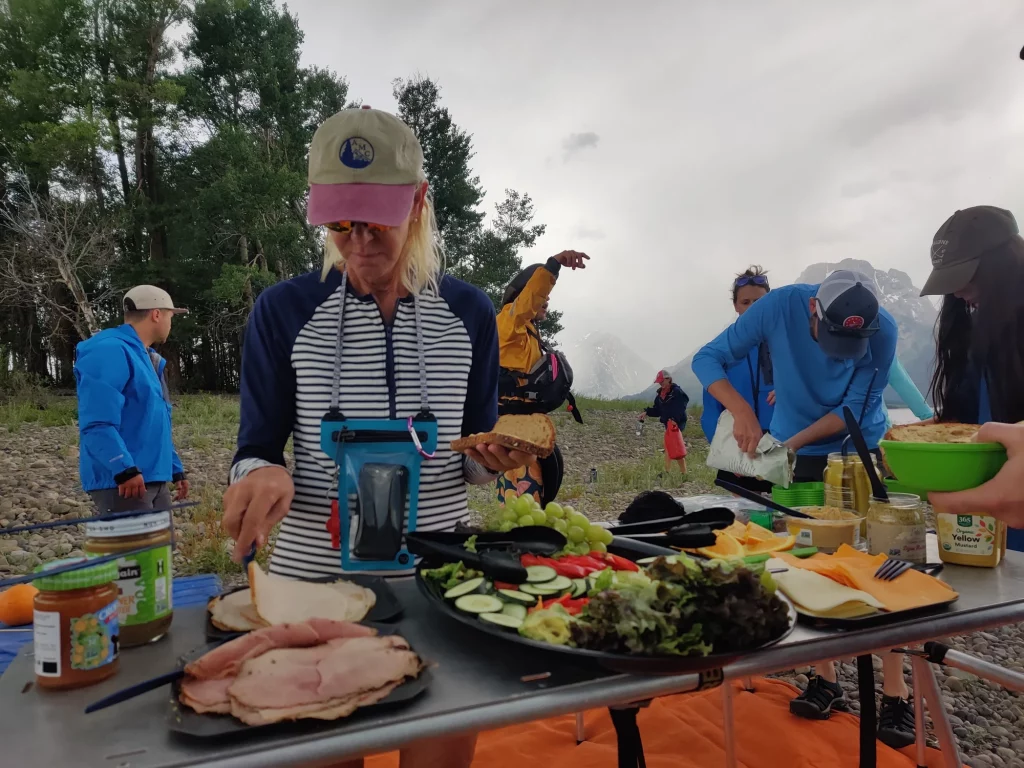
Back on the water after lunch the wind picked up and kayaking was much more challenging. Our group got spread out with the increased difficulty. Two person kayaks had a bit of an easier time by having more power and the ability to trade off and take rest breaks. The guides added some extra stops in sheltered sections, but the wind was too much on the last stretch, so they had us park the boats on the far side of the island where the camp site was located.
The hike was longer than was desired and the terrain wasn’t ideal for the sandals that most were wearing. When I got out of my kayak I slipped and fell on my knee. I scraped it rather good, but the weather gods demanded a blood sacrifice for current pleasant weather and future weather. Who am I to doubt their magic?
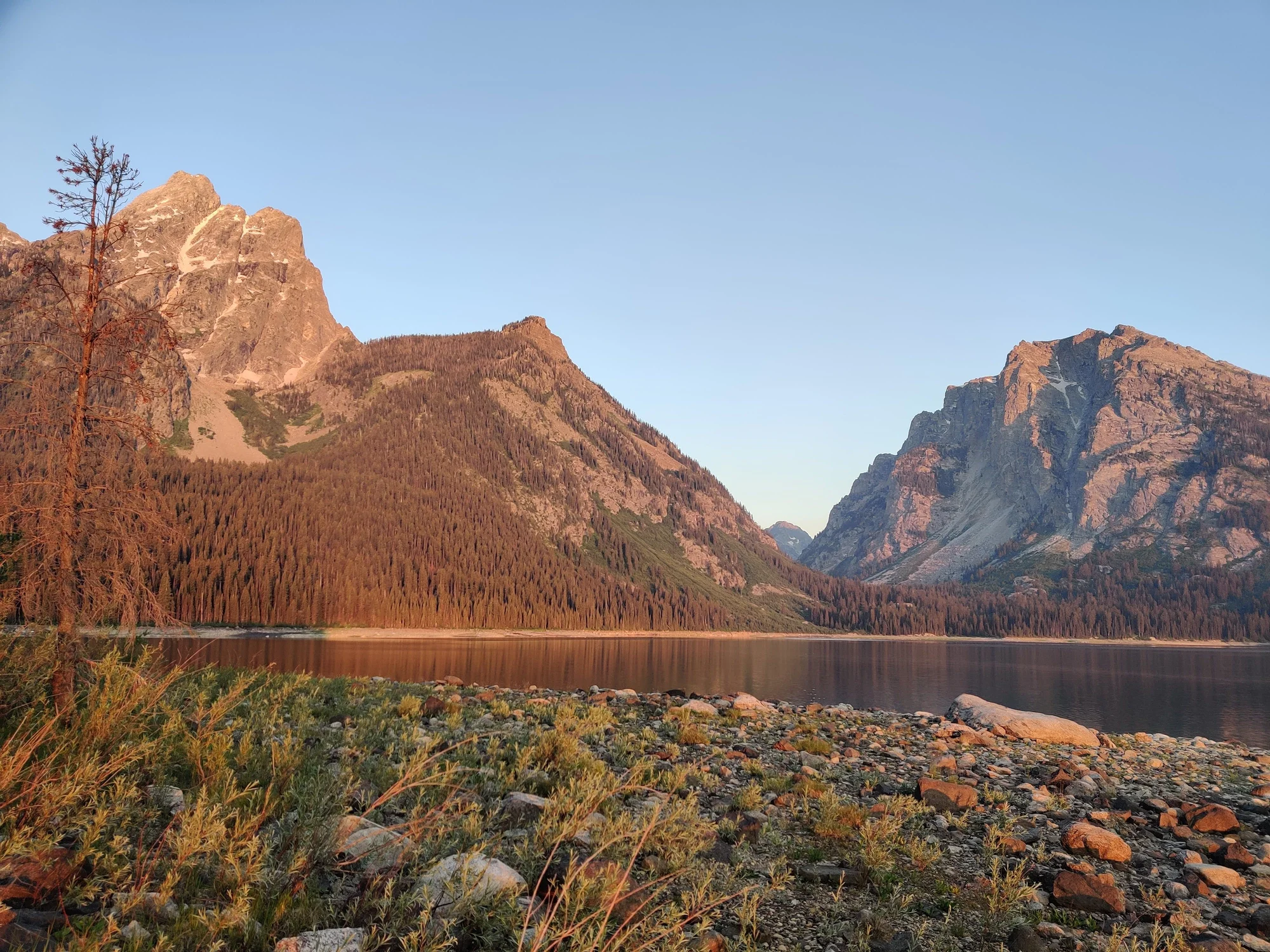
Bathrooms in the outdoors
Using the bathroom in the backcountry can vary depending on the geography and how much traffic it receives. Typically, you want to avoid going in or near freshwater sources and for solid waste you either bag it and pack it out or dig a hole and bury it.
We got a rundown of the bathroom situation at the camp. Liquid waste directly in the lake due to the havoc it could have on the landscape with the number of visitors in the same space. For the solid waste they had something called a Groover. A portable water free container with a toilet seat on it. There was even Groover protocol! An ammunition can with toilet paper and hand sanitizer was used as the key. If that was missing, you assumed somebody was using the Groover and had to wait.
With the essentials taken care of we set up our tents and had a wonderful afternoon and evening resting from the day of paddling.
